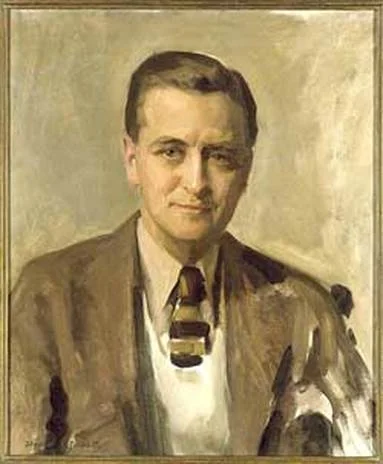Cutting Up the City in Crisis: Gordon Matta-Clark and the Urban Commons
By Jeffrey Patrick Colgan and Jeffrey Escoffier
The traditional narrative of twentieth century urban living has often concerned itself only with the antipodal philosophies and practices of urban planner Robert Moses and critic Jane Jacobs. This binary conception of American urban life contrasted Moses’ radical projects that aimed to remake New York to suit the automobile with Jacobs’ admonishments that quality of life required small, organic neighborhoods of diverse inhabitants and independent businesses. These philosophies, however, were both time and space-specific. Moses’ vision of the ideal city was prompted by the ascent of the automobile and the crumbling infrastructure of immigrant, tenement neighborhoods; he acknowledged a fundamental change in the modes of production and consumption and sought to drastically reorient urban life accordingly. Jacobs’ ideal, alternatively, reacted against the raze and rebuild, top-down approach of Moses. Yet she depended upon historical continuity and assumed an element of permanence in the neighborhoods she studied and strove to protect.
Read MoreNew York: Art and Culture Capital of the Gilded Age
Today on Gotham, coordinating editor Katie Uva speaks to Margaret R. Laster and Chelsea Bruner, editors of New York: Art and Culture Capital of the Gilded Age.
Read MoreRelics of the Underground: The Afterlife of Cultural Spaces
By Jeffrey Patrick Colgan & Jeffrey Escoffier
In early 1974, members of the punk band Television spotted a newly reopened yet unavoidably dingy lower Bowery bar on their way home from rehearsal. Returning soon after, they approached the owner Hilly Krystal and asked if he would host performances by bands that were playing a different kind of rock music. After an initial four-week residency by Television, CBGB & OMFUG (Country, Bluegrass, Blues & Other Music for Uplifting Gormandizers) continued to host countless bands and fostered the emerging punk and No-Wave music scenes of the 1970s and 1980s. Even after its role in any identifiable and burgeoning music scene came to an end in the 1990s, it still hosted performances until its ultimate demise in 2006 — its final sendoff facilitated by Blondie and Patti Smith. By 2008 the former venue was occupied by clothing designer John Varvatos, who kept some of the graffiti, stickers, and concert posters as accents to the calculated ‘subversiveness’ of the items on sale.
Read MoreThe Rise of Billy Rose: An Interview with Mark Cohen
Today on Gotham, editor Katie Uva interviews Mark Cohen, author of Not Bad for Delancey Street: The Rise of Billy Rose about the legendary New York City showman and his legacy.
Read MoreThe Metropolitan Section: City Life, Delivered
By Julia Guarneri
“I thought I knew every nook and angle of this village, but it seems your staff are ferreting out new and interesting bits every week.” In 1919, subscriber Charles Romm sent this letter to the New York Tribune, praising the paper’s new “In Our Town” section. The Tribune — like the World, the Times, the American, and many of the city’s other daily papers — had begun printing a special local section on Sundays. These metropolitan sections, as they were often called, did not print local news, exactly. They were not the places to look for accident reports or the latest in city politics. Instead, metropolitan sections gave readers glimpses of the everyday city. They brought the sights, accents, and clamor of the city into readers’ laps, to be enjoyed from a living room couch or a lunch counter. Newspapers’ metropolitan sections packaged up city life for quick, enjoyable consumption.
Jerome Robbins' New York: An Interview with Julia Foulkes
Today on Gotham, editor Katie Uva sits down with Julia Foulkes, curator of Voice of My City: Jerome Robbins and New York, to talk about how the city shaped his life and art.
Read MoreDays of Future Past: Dystopian Comics and the Privatized City
By Ryan Donovan Purcell
“The past: a New and uncertain world, a world of endless possibilities and infinite outcomes. Countless choices define our fate — each choice, each moment, a ripple in the river of time — Enough ripples and you change the tide, for the future is never truly set.” This is the lesson Dr. Xavier learns at the end of the Marvel film, X-Men: Days of Future Past(2014). It’s a science-fiction alternative history in which the X-Men send Logan (Wolverine) back to the year 1973 to change their fate. In order to prevent the sequence of events that leads to mutant annihilation Logan must break into the Pentagon, prevent a landmark arms deal at the Paris Peace Accords, and save Richard Nixon from mutant radicals (as one might expect). The comic on which the film was based, however, is a far different story.
Read MoreRemembrance of Things Not Yet Past: A Report from “Difficult Histories / Public Spaces: The Challenge of Monuments in NYC and the Nation”
By Arinn Amer
A year after white nationalists descended on Charlottesville, Virginia in a deadly riot they framed as a protest against the planned removal of a bronze rendering of Robert E. Lee from Emancipation Park, monuments loom large in our national consciousness. With new memorials and markers raising awareness of America’ dark history of racial terror and hundreds of Confederate flags and generals retreating from public view even as thousands more remain firmly entrenched, the incredible power of the stories we tell about the past in shared physical space has never been more apparent.
Read More








